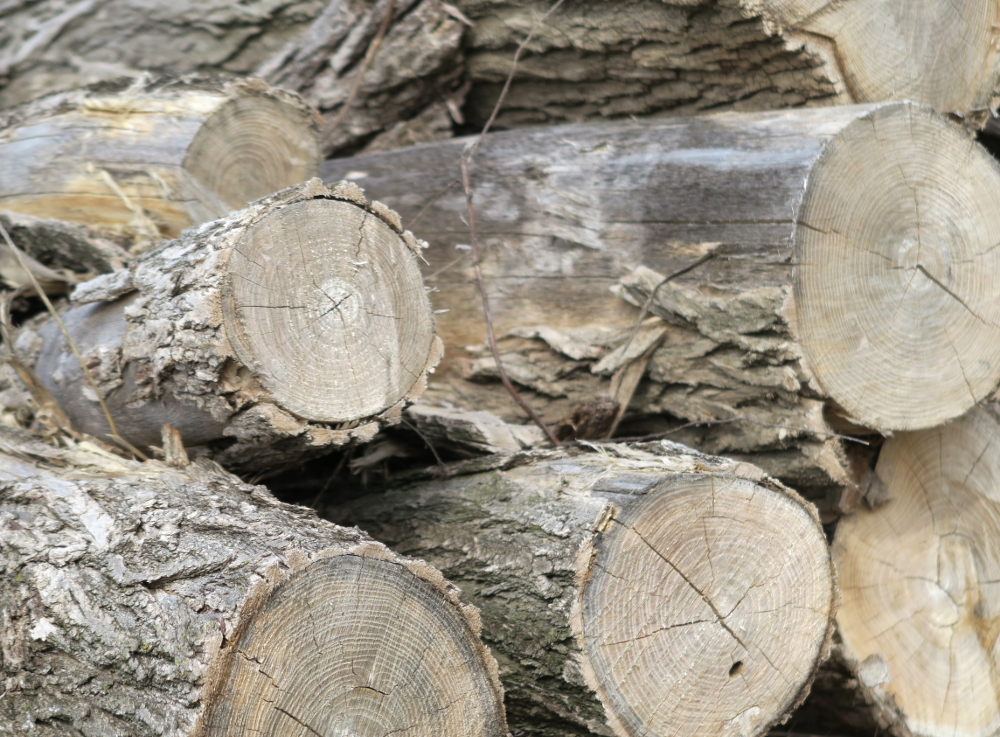
I came across a log-built hunting blind not too long ago. It reminded me about the difference between chopping and splitting wood. Oddly enough, most people use the wrong tool. Do you?
Wood chopping and splitting are two different techniques that require different tools. The best maul for splitting wood is not the same as an axe.
Search and read customer reviews of the best splitting axe on the market in 2023 on Amazon.
An axe, which has a sharp and thin blade, is generally designed to fell a tree or chop wood by cutting across the fibers.
Axes have shorter handles and are lighter, about three to four pounds.
On the other hand, a splitting maul or simply maul, is blunt and fat with a V-shaped head like that of a sledgehammer, with a relatively long handle, and is necessarily heavy.
It is designed mainly to split a piece of cut wood along its grain using the blunt or dull edge to drive the wood fibers apart, and the V-shaped head forces the crack further with repeated pressure.
Now that we have differentiated between the axe and the splitting maul, we give you now the lowdown on things to consider when buying a splitting maul.
Weight and shape
For a splitting maul to be most effective, it must be heavy with a much wider head.
It can weigh from six to eight pounds (4 kg), although some mauls weigh over 12 pounds.
These heavier types are entirely made of steel and are designed for robust and heavy-built users.
The heft, coupled with the width, makes the maul more advantageous as it is less likely to get jammed in the chunk of wood.
Splitting mauls have greatly evolved from the standard wedge-shaped head to the more advanced forms like the swiveling sub-wedges or conical heads with slightly-convex wedge to prevent from becoming stuck.
This is to say that you have to choose the maul that suits your build and preference in terms of its heaviness and shape.
Handle material, design
A good splitting maul handle usually comes in a near-rounded shape and is typically straight and long, for three main reasons: it is used for levering and swinging, it affords a firm double-handed wrap-around grip, and most importantly it directs the maul into the ground instead of directly into the feet.
Traditional maul handles are normally made from hardwood, such as hickory, but nowadays synthetic fiberglass and high-carbon steel have become more and more popular in the market.
Some handles also come with plastic or rubber grips which are designed not only to add more hand comfort but also to absorb heavy blows.
The advantage of fiberglass over wood is that it is less likely to crack or split.
Handle length
As mentioned earlier a maul’s handle must be relatively longer than an axe but nowhere near the length of a pole saw pruner to protect your feet from being hit after splitting the wood.
Not only that, it allows the use of both hands that makes for an easy and powerful overhead swing, a force necessary for splitting huge chunks of woods.
The length of a good handle should be anywhere from 29 inches to 35 inches depending on the heaviness of the head or poll.
The heavier and longer the maul, the less force employed to swing it down because the weight of the head carries it through the wood.
That’s the physics of the maul – length of the handle times the force of the maul’s weight produces optimal force on chunk of wood with least force from the person using it, and the designs of splitting mauls work around that principle.
Head quality and design
The material used and the head’s design account most of the splitting maul’s durability and reliability.
Some splitting mauls have drop-forged and heat-treated heads for strength and long-term durability.
Choose high-quality steel. They can take on even the toughest piece of work.
Others have a reinforced steel collar running down just below the axe’s neck to absorb the shock of powerful blows and are less likely to come loose with constant levering action.
A few mauls have sturdy and slightly longer polls with beveled (some are flat) corners that are perfect for driving a splitting wedge into huge and heavy blocks of wood.
Reputable name or maker
Names and brands add to the cost – that’s true. However, it’s undeniable that makers who had been in the industry for decades demonstrate commitment to excellence in their product, which cannot be said of fly-by-night companies.
Considering that your maul will see action for a long time, buy from reliable companies. The outright cost will pay in the long run.
User’s personal style and preference
At the end of the day, the maul that you need is one that meets your expectations, personal preferences, and wood-splitting style.
If you’re the type who regularly splits huge logs of wood, the powerful combination of splitting maul and sledge axe will be more along your alley.
If you’re a young and hefty lumberjack in the logging industry, then heavier mauls ranging from 12 to 16 pounds are for you.
You may also want to check on chemical finishes used, sheath material and style, and other minor things before deciding to buy.
This simple guide to buying the best wood splitting maul should help you decide which quality maul suits you best.
Find the best splitting maul in 2023 on Amazon.
Originally posted 2023-01-06 05:33:31.


